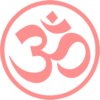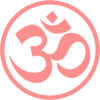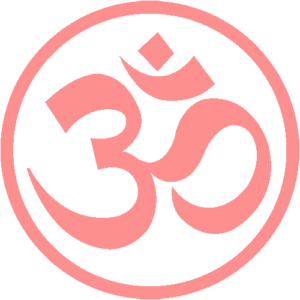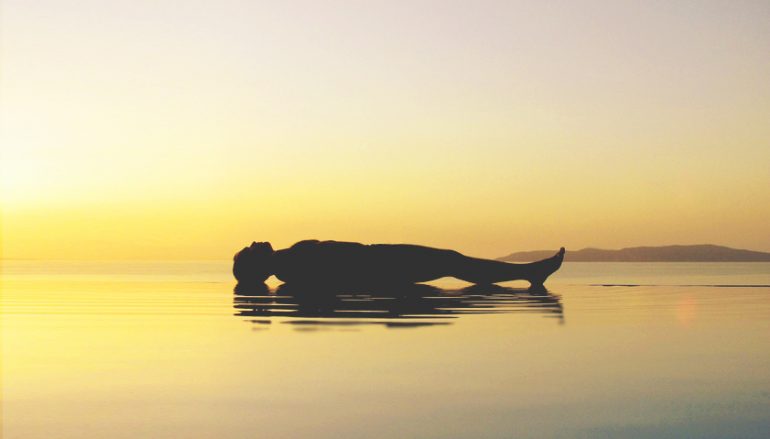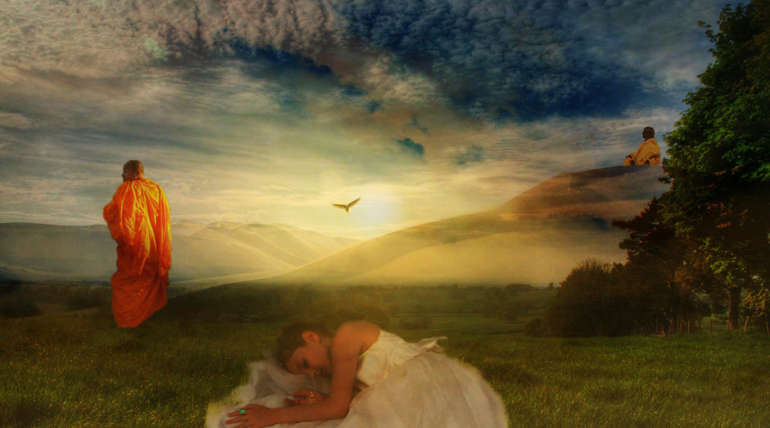Le Nidrâ Yoga est une tradition orale faisant partie de l’immense corpus des yoga vieux de plusieurs siècles et dont la transmission s’est maintenue jusqu’à aujourd’hui. Il a été enseigné de Gurus (instructeurs) à Sishyas (étudiants) principalement par le biais de la relation personnelle et de l’expérience directe. Il concerne principalement l’étude des états très profonds de Sithilikarana (relaxation) relié à des degrés très élevés de Dharana (concentration).
Parmi les multiples niveaux de la relaxation très profonde, il en est un appelé Maha sithilikarana, c’est- à-dire la Grande Relaxation, ou en d’autre terme « la mort »
Avant d’aborder plus précisément ce domaine, il nous faut prendre en compte quelques autres concepts liés à cette culture du Nidrâ et de son regard particulier sur la vie elle-même, prise et comprise dans son ensemble. Ainsi il est dit que la vie est un processus éternel ne possédant ni commencement ni fin, ni aucun but particulier à atteindre. Elle est un mouvement unique, mais aussi très complexe et dont la créativité et l’expansion sont constamment à l’œuvre.
A l’intérieur de cet immense mouvement éternel, des objets des situations et des êtres apparaissent, se transforment et disparaissent. Et ce que nous appelons naissance, évolution et mort doivent être regardées comme des expressions naturelles de cette vie même, rien de plus, mais rien de moins non plus.
Un autre point fondamental à intégrer est la différence essentielle existant entre un événement et un processus. Par exemple, la tradition du Nidrâ insiste sur le fait de différencier radicalement la mort- événement qui ne survient qu’une seule et unique fois (du point de vue de ceux qui sont vivants) de la mort-processus qui est une force naturelle dynamique intrinsèque à la vie et qui se perpétue constamment .
Ce que nous nommons la mort est un événement survenant aux autres une seule fois. Ce que nous nommons la mort-processus est ce qui arrive à chacun de nous en permanence, ce mouvement qui implique continuellement de perdre ce que nous considérions définitivement acquis.
Nous pourrions nous demander si la mort-événement est une fin radicale ou bien un grand changement pour un autre état qui nous est inconnu. Personne jamais n’a donné de réponse précise sur ce sujet, quand bien même un grand nombre de religions ont donné un point de vue personnel sur la question. Ce qui est certain est que ces mêmes religions se sont servies de leur point de vue pour imposer de nombreuses croyances et autres comportements stéréotypés à leurs ouailles, sans jamais vraiment donner de réponse limpide en dehors du cercle fermé de leurs adhérents qui précisément se passaient de questionnements soutenus et approfondis sur ce sujet.
Les seules vraies questions à partir desquelles nous pourrions commencer à chercher sont essentiellement: Que signifie réellement finir? Existe-t-il un processus qui amène une chose ou une autre ou quelqu’un jusqu’à un état final ? Existe-t-il vraiment une fin définitive et radicale à quoi que ce soit ?
Tenter de regarder profondément la réalité telle qu’elle est réclame une grande ouverture d’esprit tout autant qu’un désir ardent de comprendre. Mais cela demande aussi de développer une capacité d’accueillir entièrement des éventuelles réponses absolument nouvelles et imprévisibles auparavant. A présent, si nous considérons la routine de notre quotidien, il apparaît avec évidence que tout ce qui arrive à sa fin dans notre vie ne survient pas par hasard et sans raison, mais précisément du fait de plusieurs causes associées les unes aux autres. Ce qui surgit est la conséquence de plusieurs facteurs dont nous n’étions pas forcément conscient auparavant, et qui en s’organisant ont lentement conduit à la fin ou la perte définitive d’une chose ou d’une autre. Vu ainsi, nous pourrions affirmer que la mort, à son tour, est un événement dont un certain nombre de causes ont préparé insidieusement sa brutale apparition. D’autre part, nous avons tous constaté que qu’elle que soit la situation, lorsque quelque chose se termine, il y a toujours quelque chose de nouveau qui apparaît tôt ou tard, et qu’il est souvent bien difficile de voir ou d’évaluer précisemment le lien qui les associe. Le Nidrâ Yoga est une démarche concrète d’exploration dans le lien situé entre deux situations distinctes de notre vie, mais il est également un outil permettent de vérifier s’il existe véritablement quelque chose dans la vie en général que l’on puisse qualifier de radicalement final ou fini. Sur le plan superficiel des apparences, bien évidemment les objets matériels ont une fin en soi dès lors qu’ils cessent d’exister. Un vase brisé n’est plus un vase, un corps sans respiration n’est plus un corps vivant. Cela dit, pouvons nous limiter la définition d’un être vivant à l’existence exclusive de son corps ? Que sommes nous réellement, qui sommes nous ? Le Nidrâ Yoga propose une réponse à cette immense question de la réalité de notre vie. Il affirme que ce que nous sommes est le mouvement même de la vie, qu’il n’existe rien de tel qu’une identité déterminée qui pourrait clamer une quelconque particularité qui la définirait. Que dans la profondeur de l’être et chez chacun de nous, nous ne sommes rien d’autre qu’une expression de cette vie même, de ce mouvement sans début ni fin, cette dynamique de l’éternité. En d’autre terme cette idée que quelque chose puisse prendre fin est un mythe, que rien jamais n’atteint sa finitude, mais que toute chose, à chaque instant est parcouru par un état de transformation sans commencement ni fin.
Lorsque cela est ressenti et vécu avec netteté, il ne reste alors plus aucune place pour la crainte ou la peur de mourir. Car la vraie question à l’égard de la mort n’est pas le fait de la mort en soi. La question qui se pose est: pouvons nous faire face à la mort sans crainte, sans peur? Pouvons-nous en tant qu’êtres humains considérer la beauté de ce grand mystère qu’est la mort sans tenter de lui donner un quelconque sens ou une signification qui créditerait la vie elle-même ? Pourrions-nous vivre nos routines quotidiennes avec la sensation que cette mort est comme un ami très proche et très intime avec lequel nous avons à composer inéluctablement ? Et ainsi cesser de tenter d’expulser cette vérité imparable de nos vies. Parce qu’une autre réalité de la mort est le fait que nous savons avec certitude qu’elle se produira. Ce que nous ne savons pas est à quel moment elle arrivera. En réalité, la mort mise à part, nous ne pouvons être sûr de rien, ni de la succession des événements formant la trame de nos vies, ni même si quelque événement aura lieu ou non. Seule la mort est garantie de se produire; et c’est une garantie à 100% .
Le Nidrâ enseigne un positionnement face à la mort en tant que réalité incontournable, tout en réalisant que le changement est une loi fondamentale de la vie et qu’il est bien plus naturel et véridique de vivre avec la conscience de la mort, plutôt que de l’ignorer ou d’en rejeter la réalité. De façon très pratique, le Nidrâ Yoga a développé tout un ensemble d’exercices afin d’enquêter profondément le mystère du non- connu, c’est-à-dire la mort et le processus du mourir. Cela demande de s’aventurer profondément sur le chemin d’une infinie relaxation, bien plus loin que la simple détente du corps, mais aussi et surtout dans la détente mentale afin d’en évacuer les peurs qui y sont contenues. Il semble que bon nombre des nos peurs soient principalement des résurgences de la mémoire, incrustées dans les replis de nos croyances ou incompréhensions qui se sont forgées au cours d’événements passés. L’idée de la mort appartient à ces croyances, et n’est qu’une croyance parmi bien d’autres. Mais celle-ci peut conditionner la totalité de notre quotidien et empoisonner notre vie de façon consciente ou inconsciente.
Être défait de la peur de la mort ne signifie pas que la mort elle-même soit inexistante. Cela signifie simplement que la réalité de la mort pourrait bien être différente des croyances ou des points de vue personnel élaborés par la mémoire.
Aller très profondément dans la relaxation débouche sur un état de complet lâcher-prise, un état ou l’on peut contempler l’infinitésimal mouvement perpétuel de la vie dans sa nature intime. A l’intérieur de ce mouvement, parfois, la claire observation du commencement, de la transformation et de la fin d’un événement quel qu’il soit entraîne par moment la perception d’une réalité encore plus profonde. La vie est une force dynamique qui ne peut être comprise par les capacités de notre pensée limitée.. Accepter cela,ce fait tel quel, sans aucune référence logique ou illogique constitue précisément en soi la fin de toute mort.
La fin de la mort n’est pas un tour de magie pour des esprits naïfs. Elle est la seule réalité qui fait surgir un état d’être qui est silence, vastitude et pur bonheur. Vivre un tel état est le cadeau des plus merveilleux dont nous n’aurions jamais eu l’idée que la mort puisse nous offrir !
